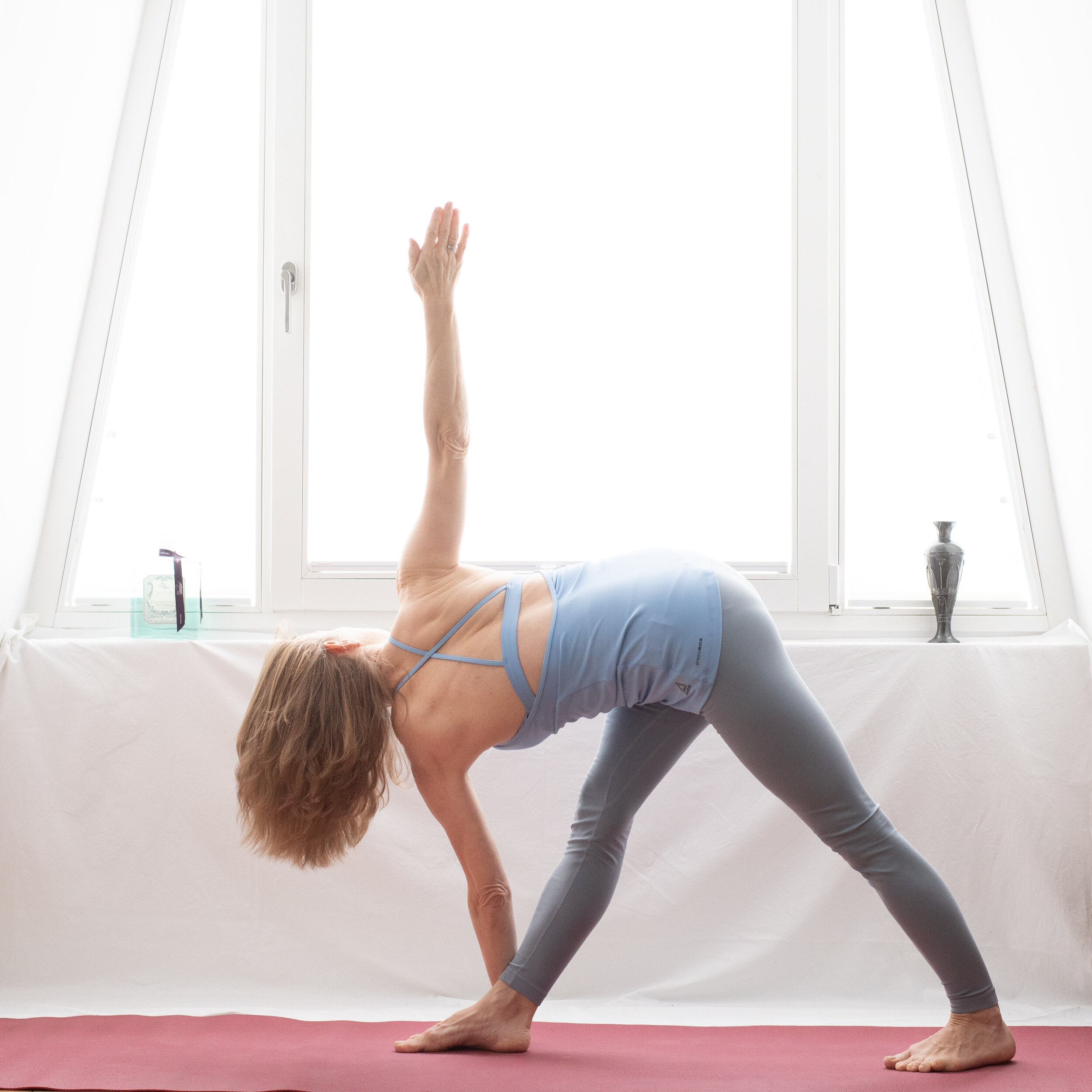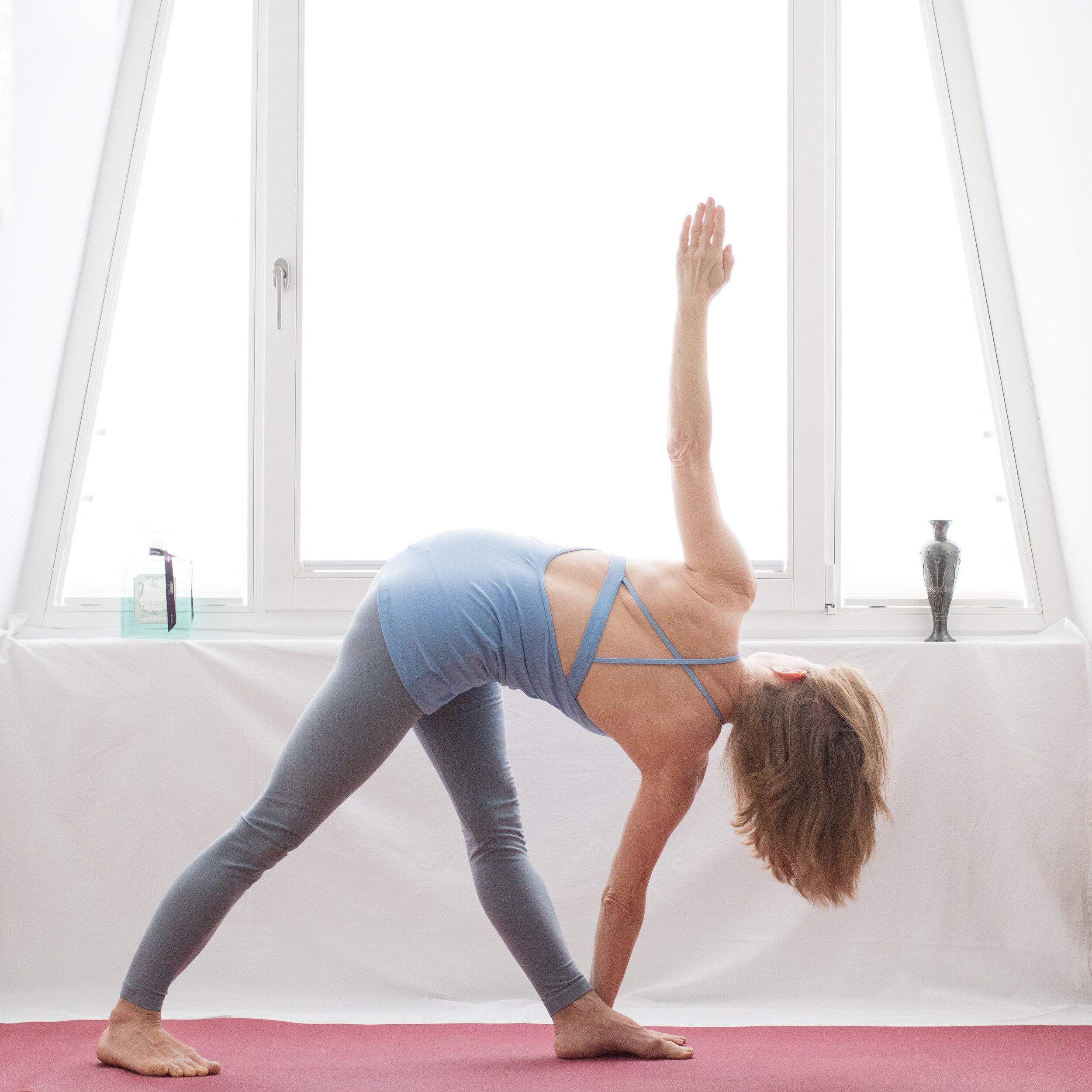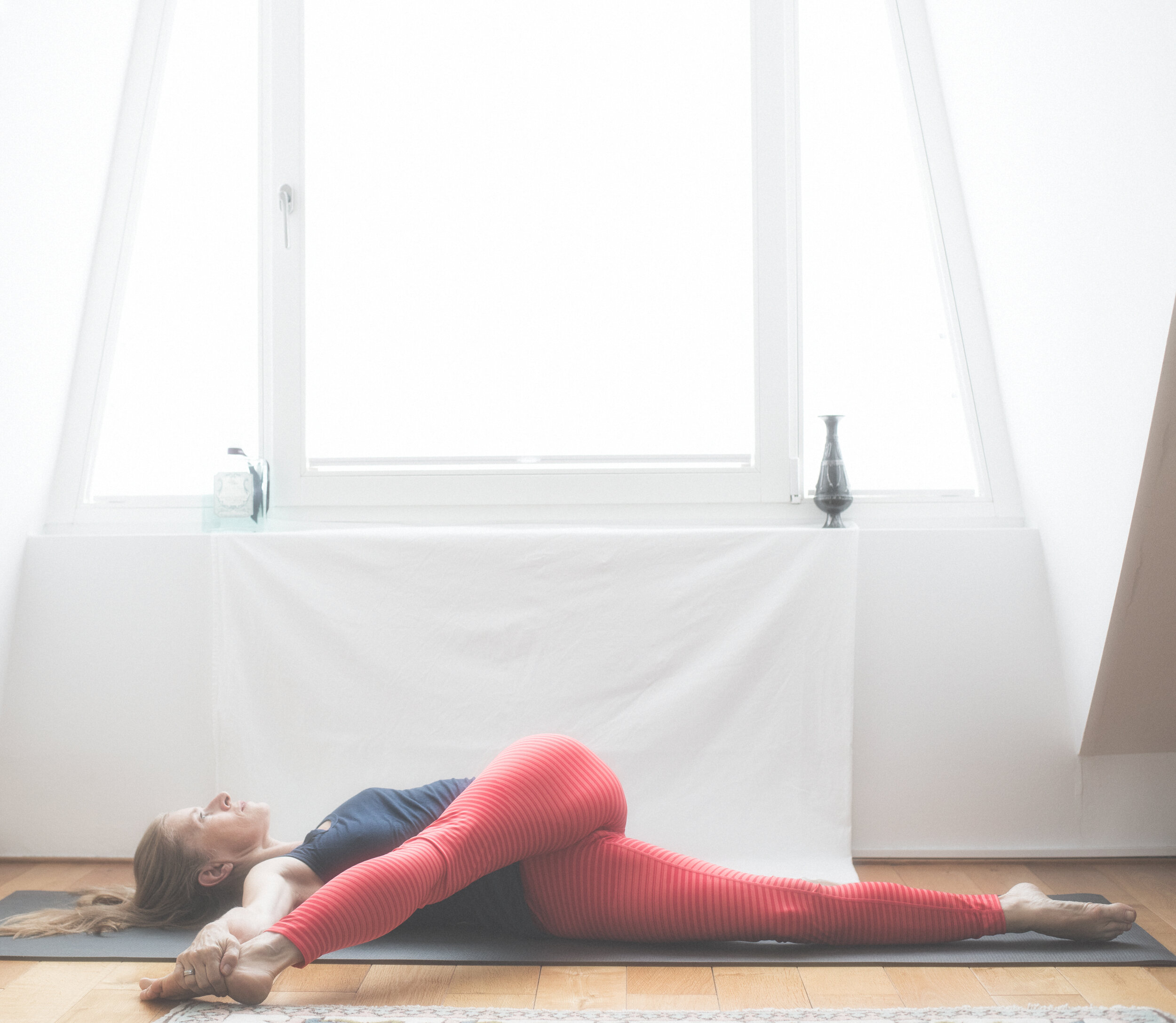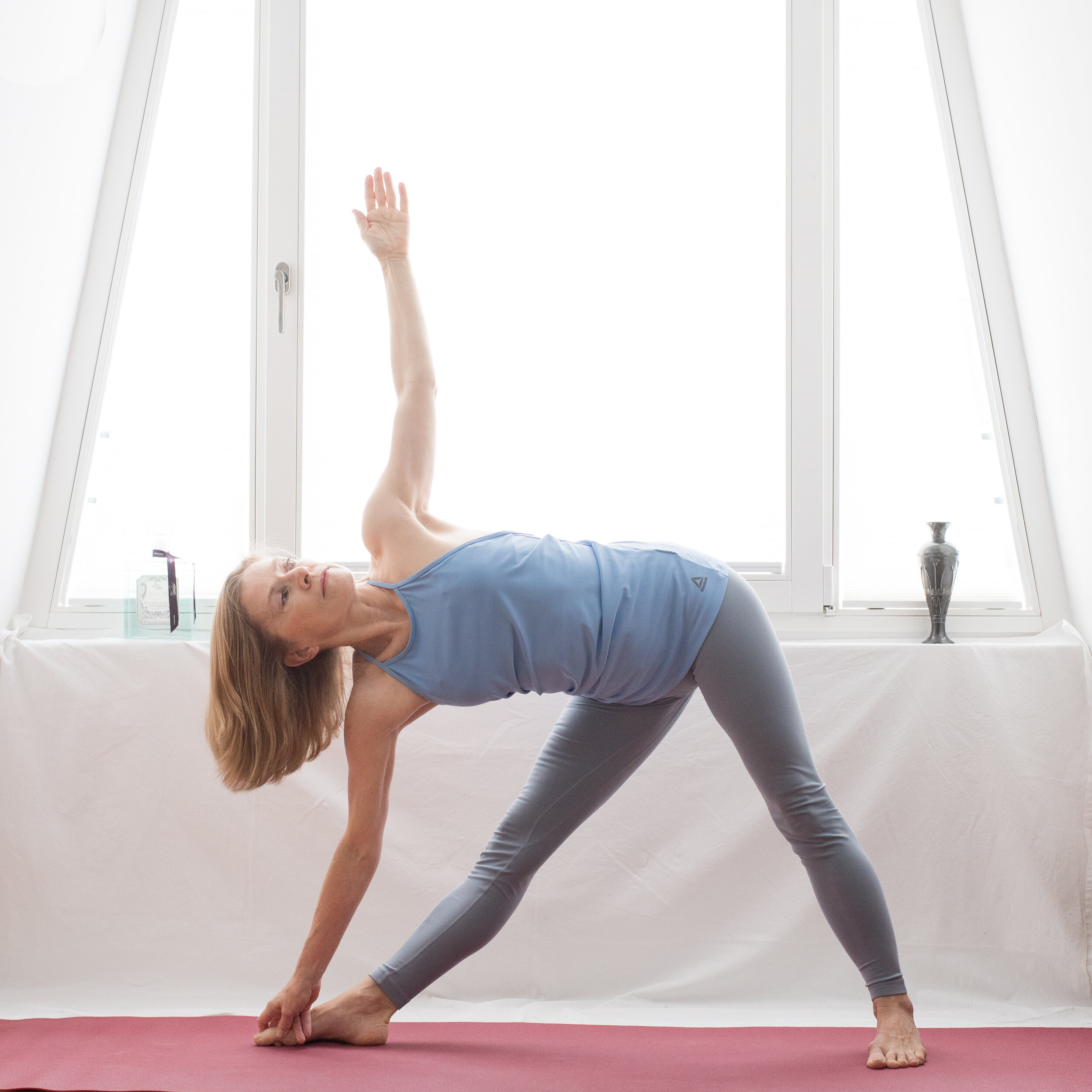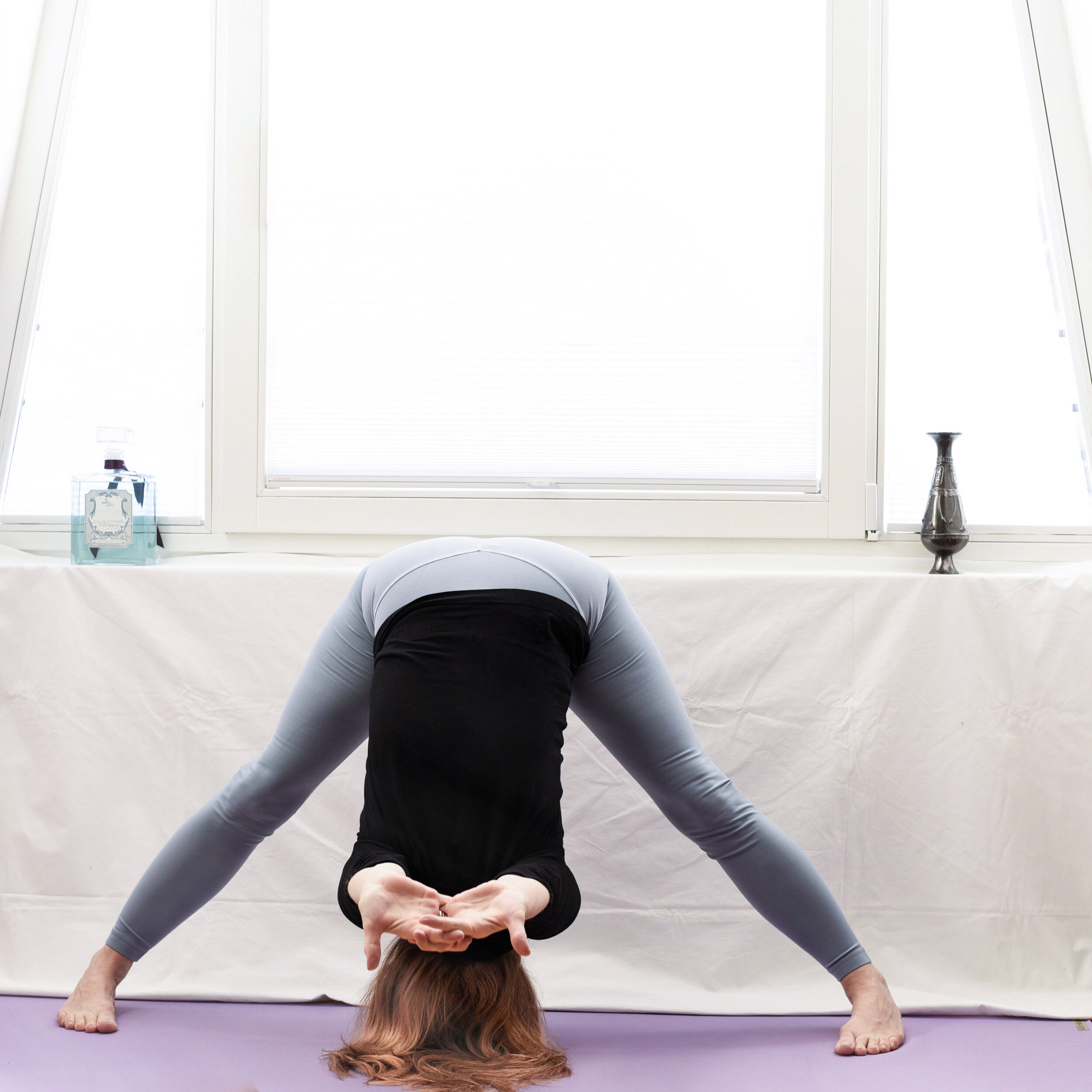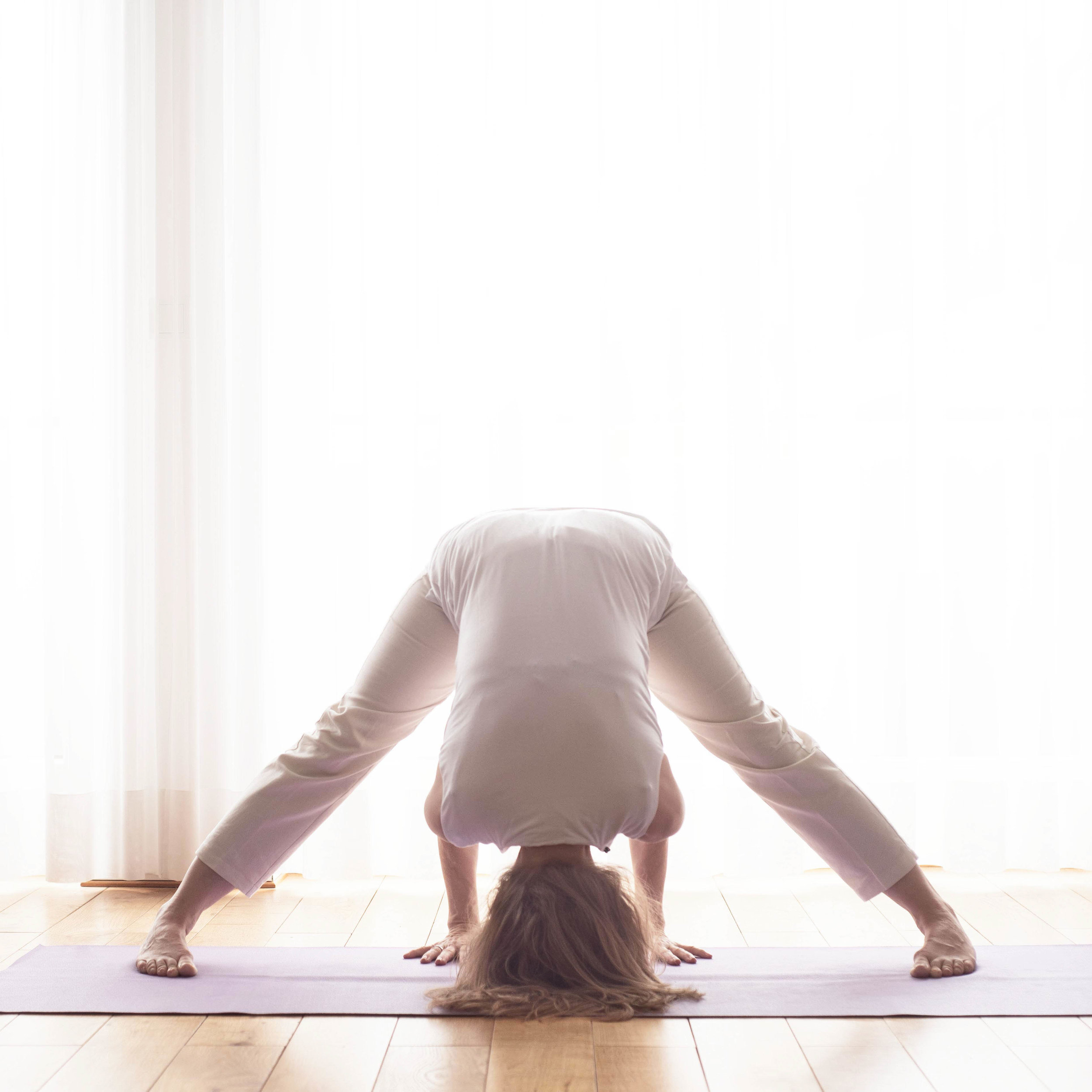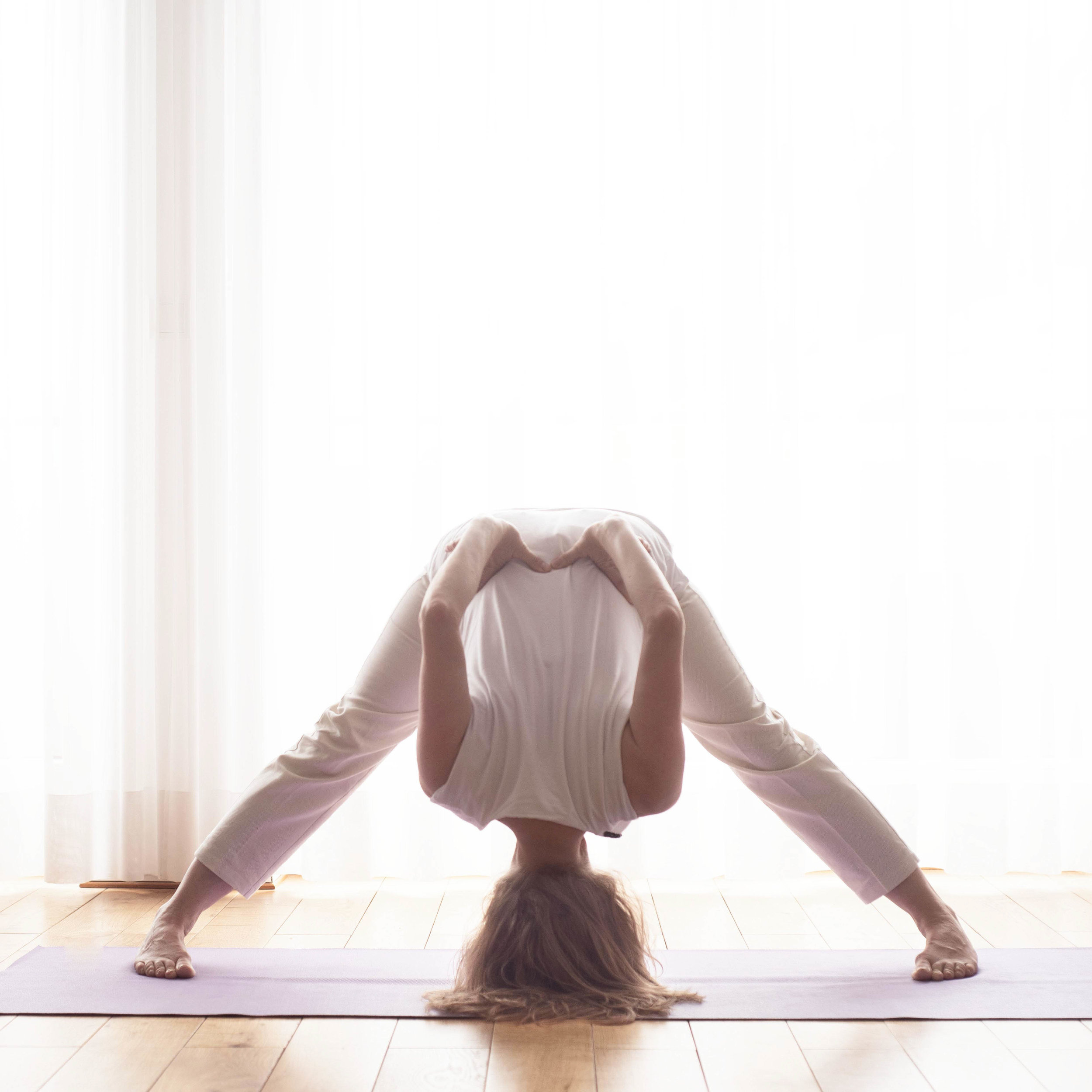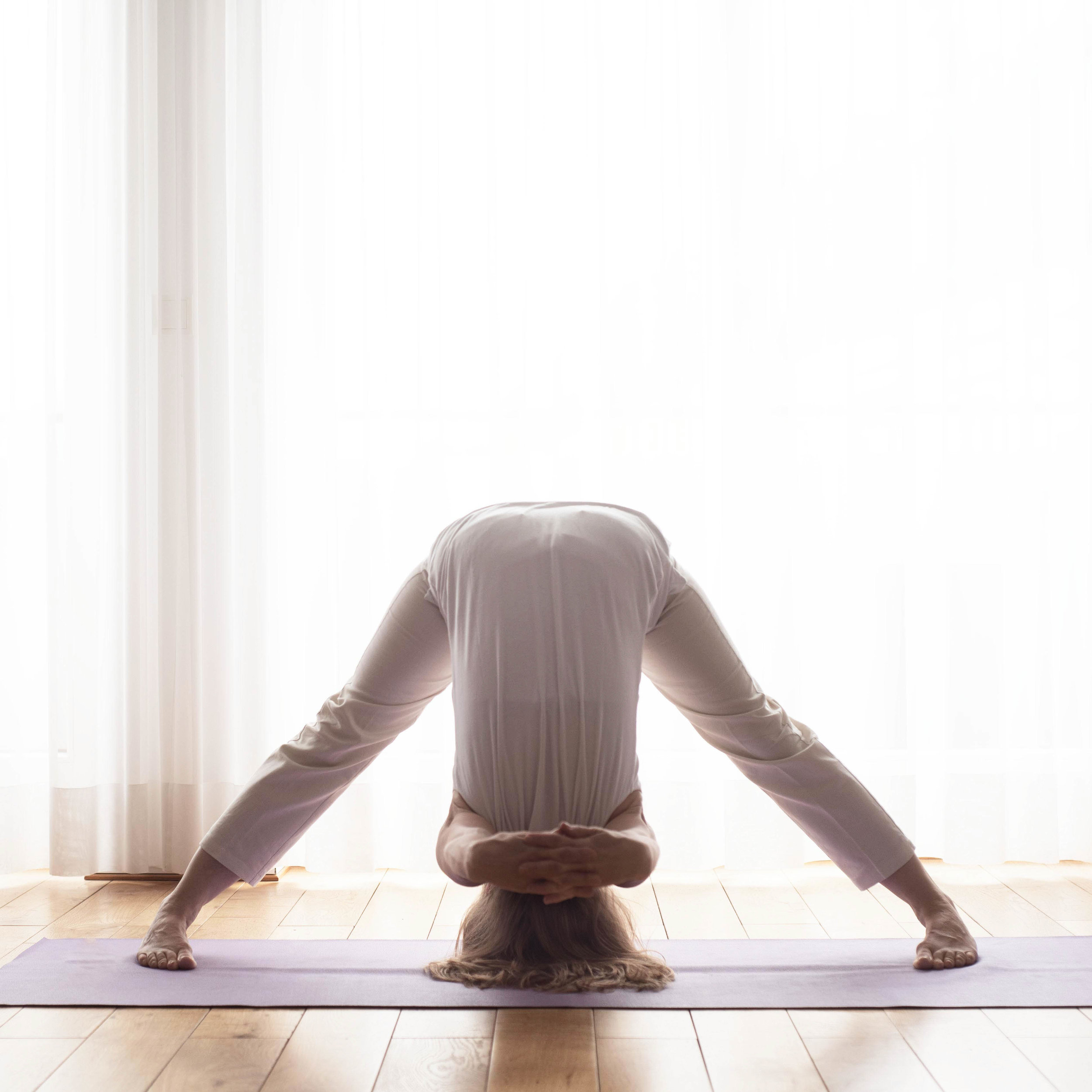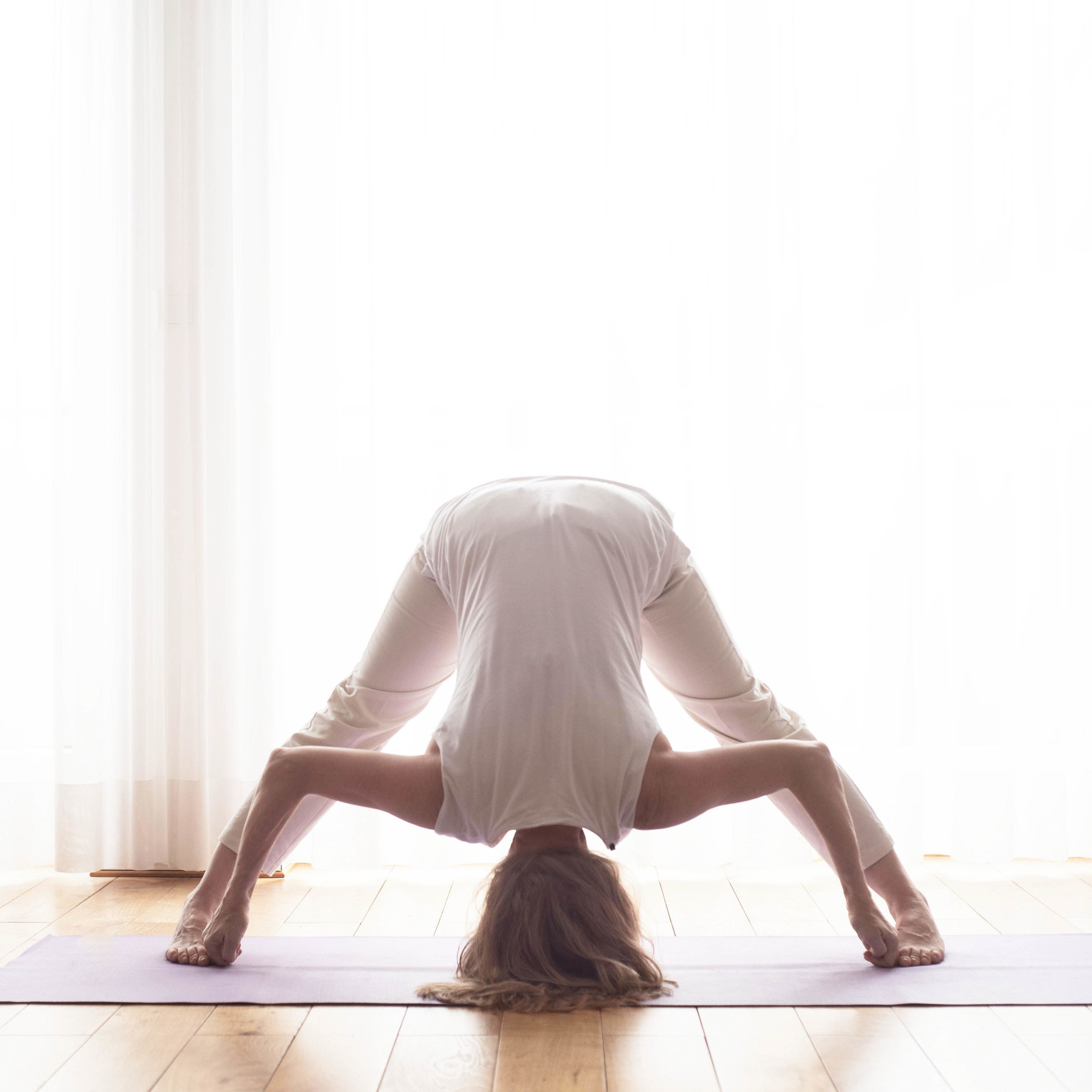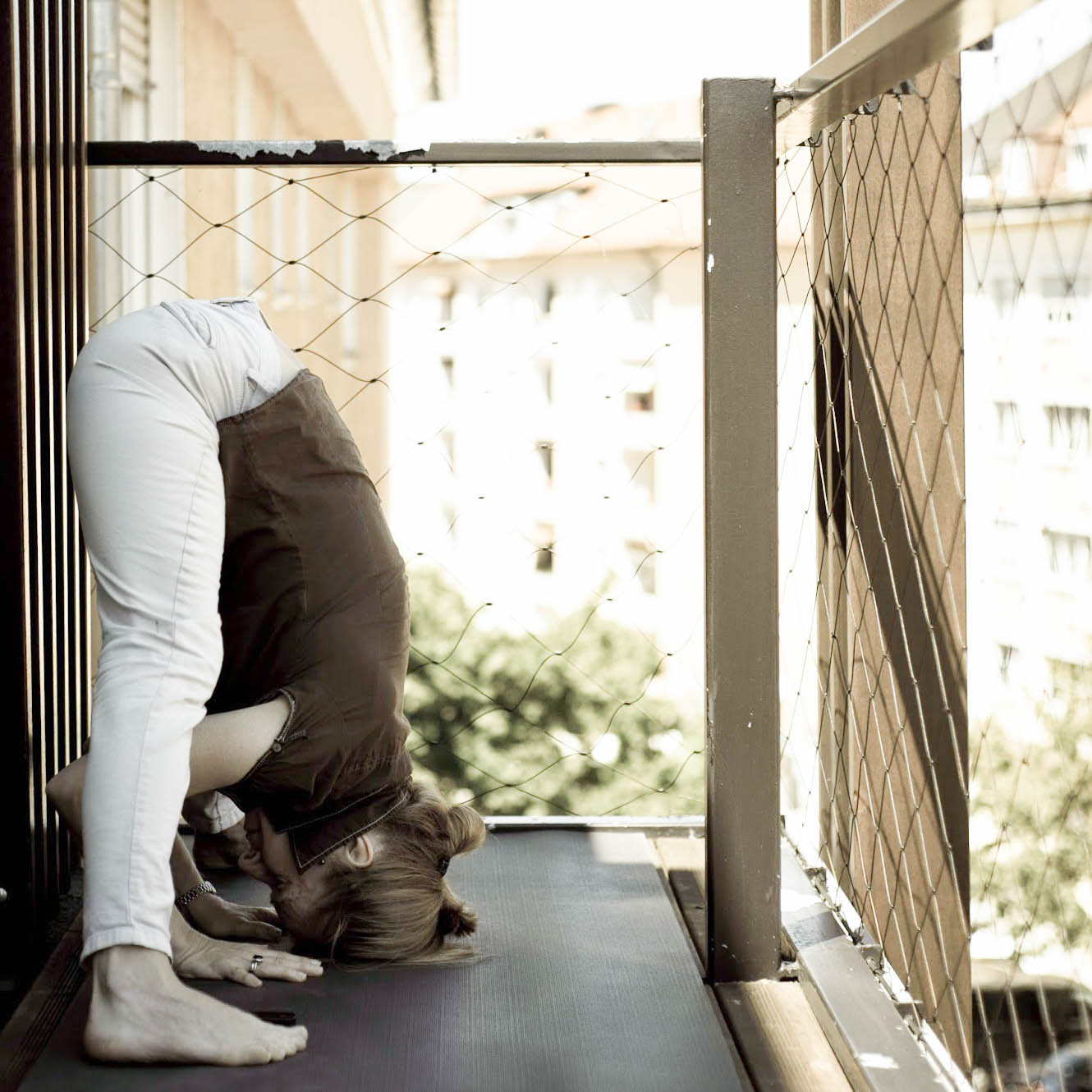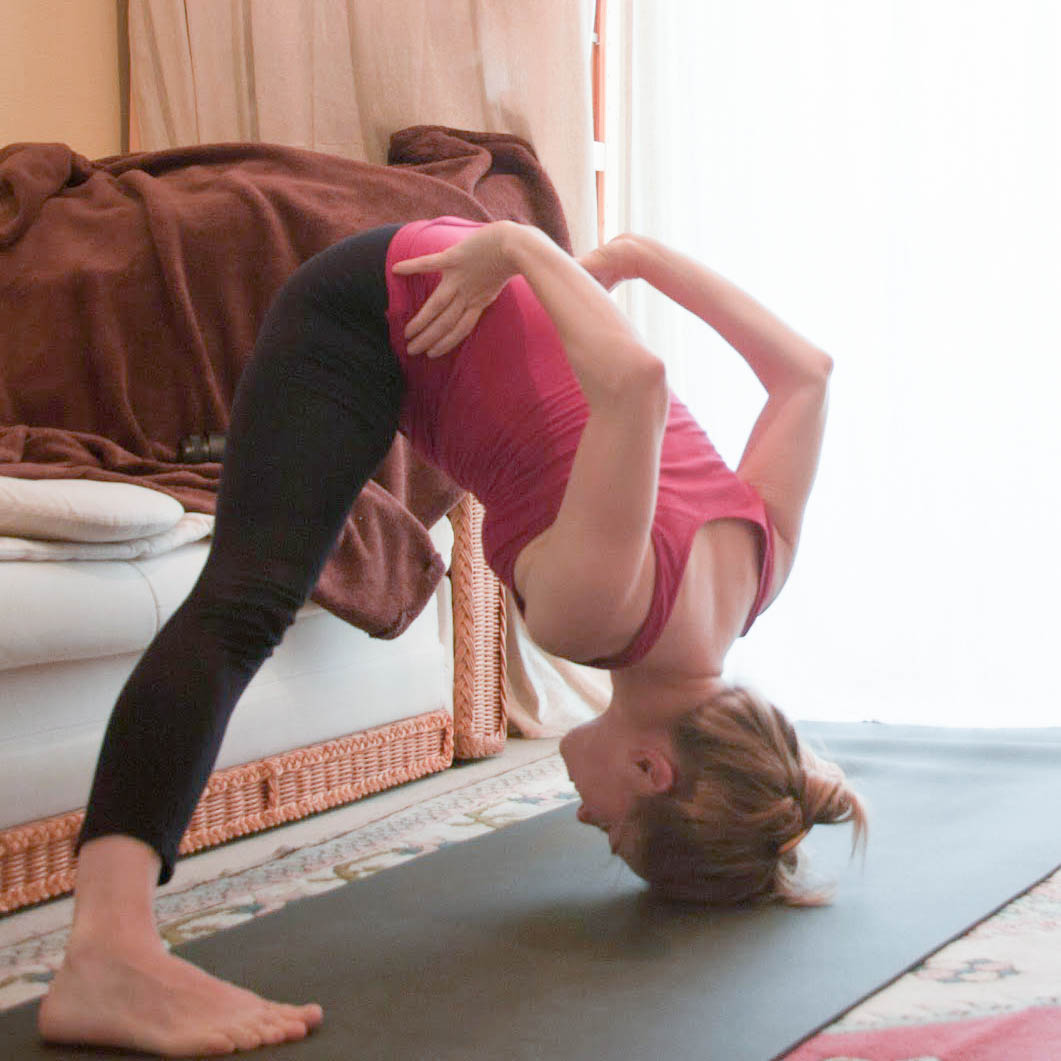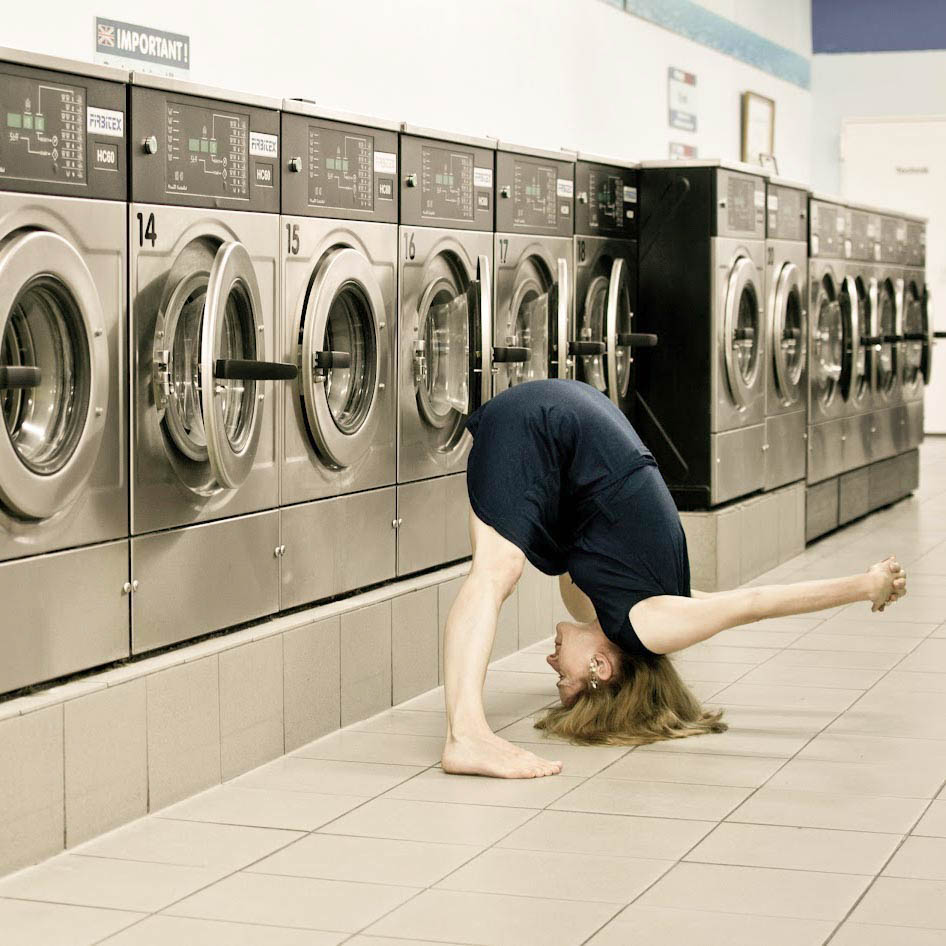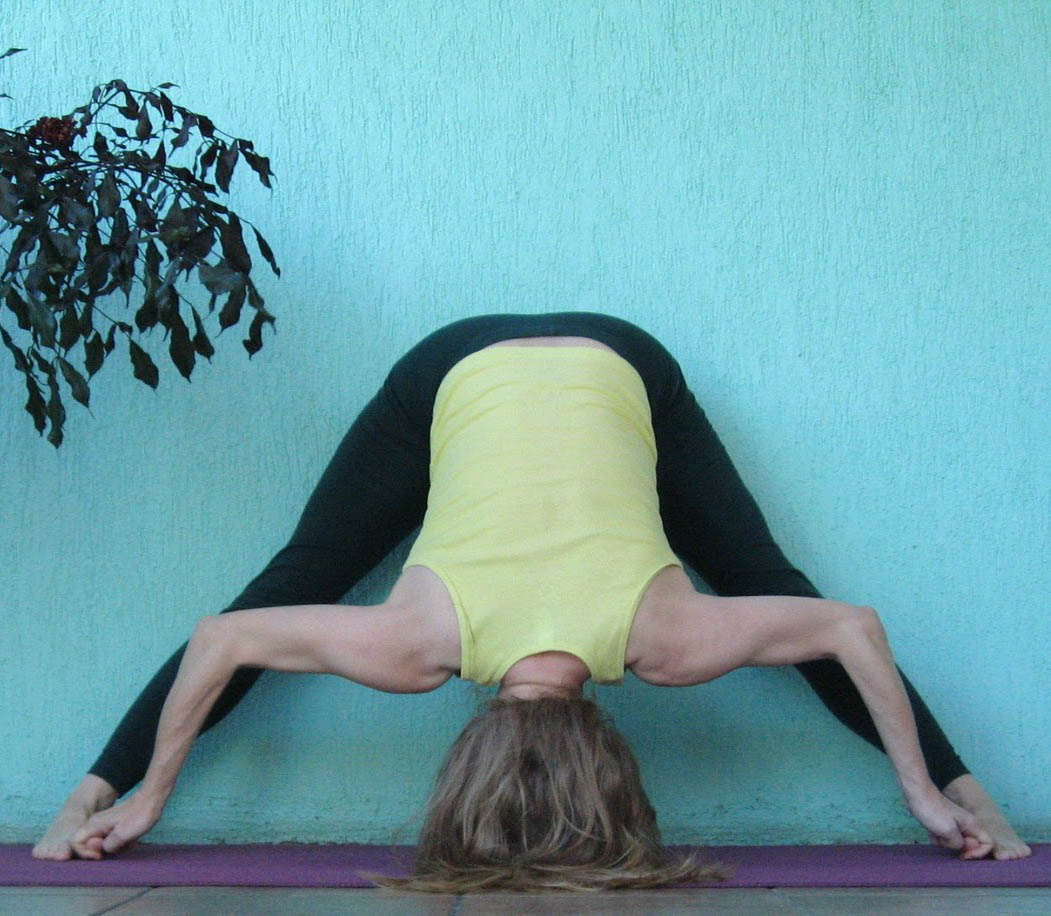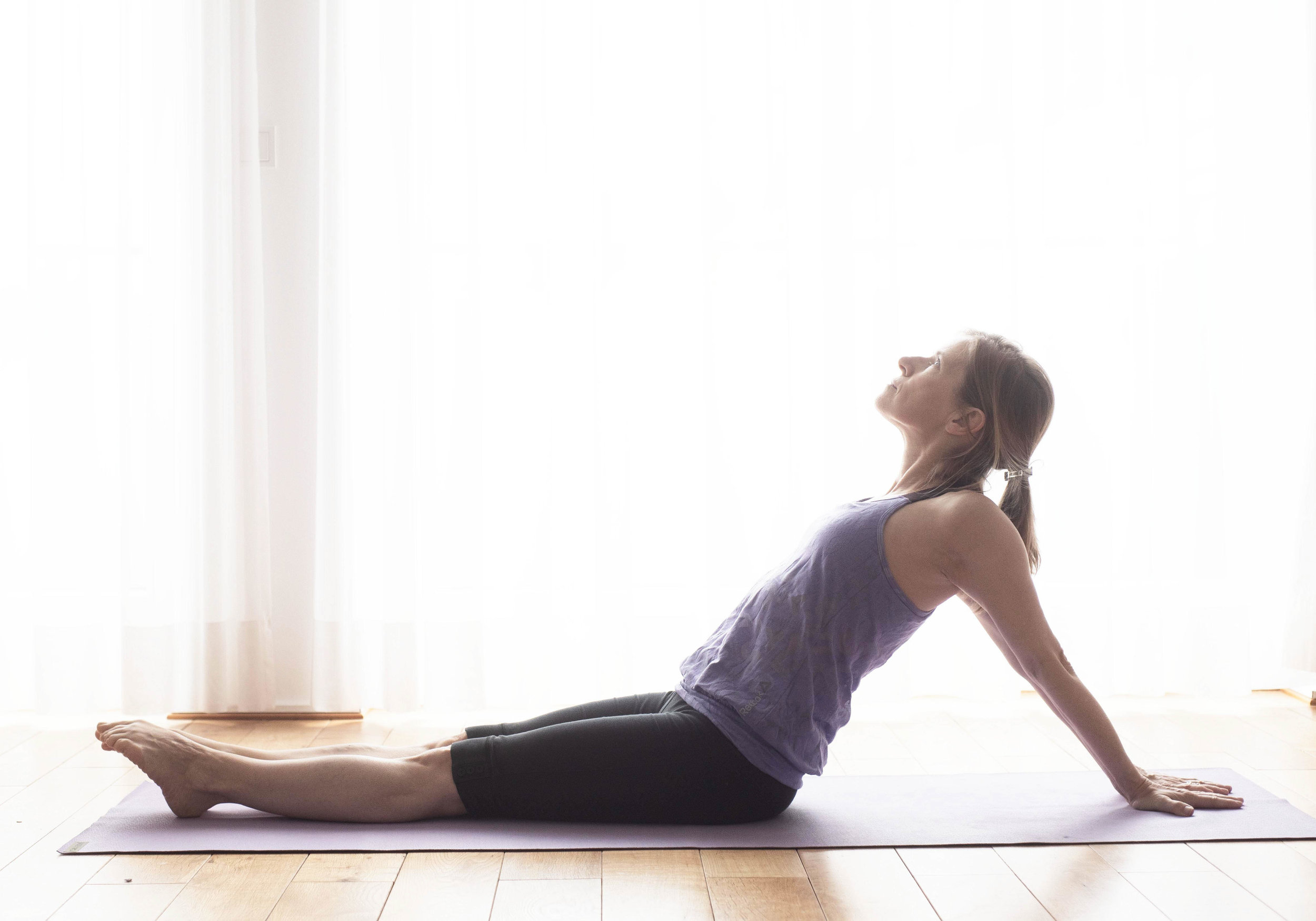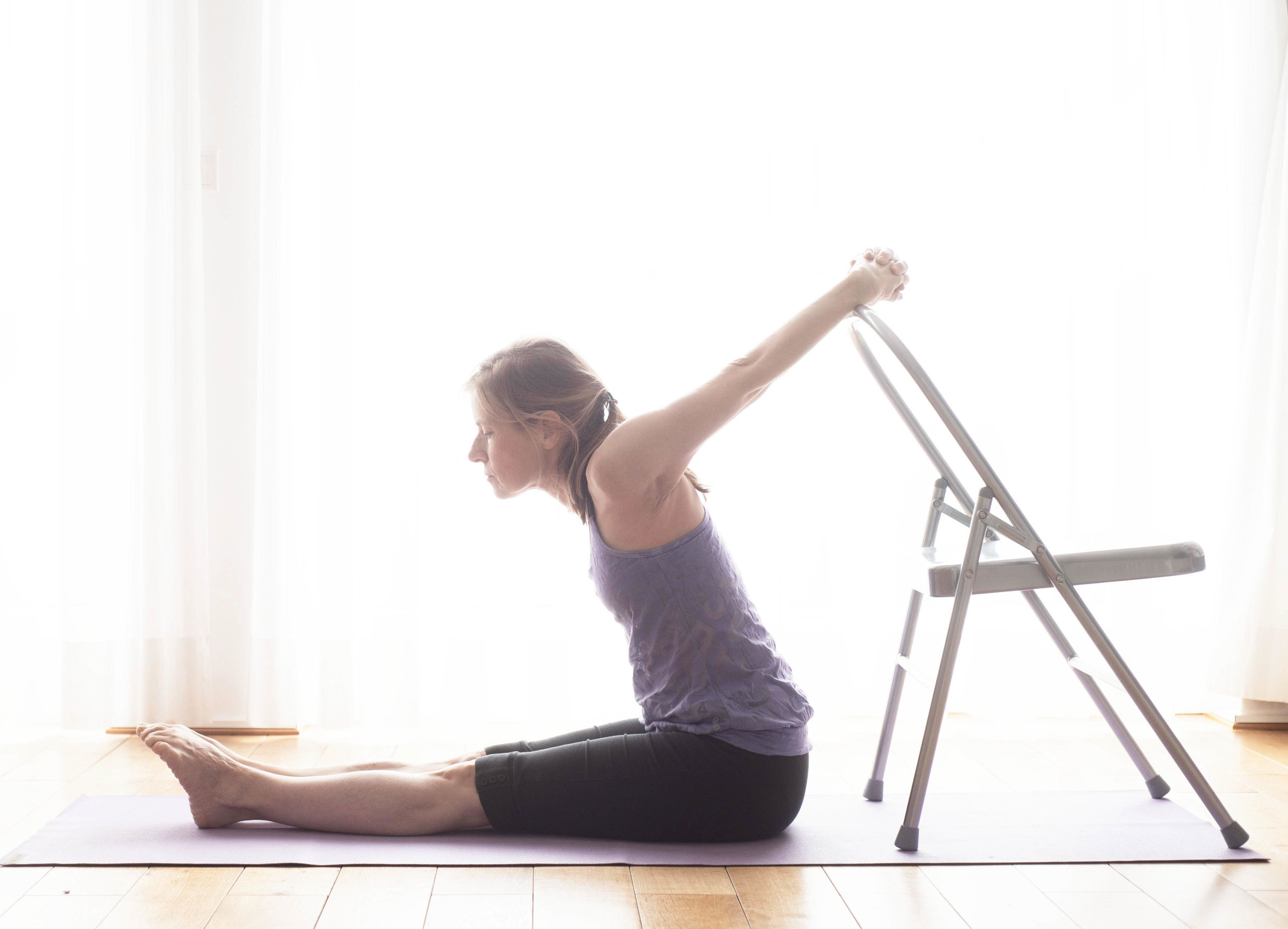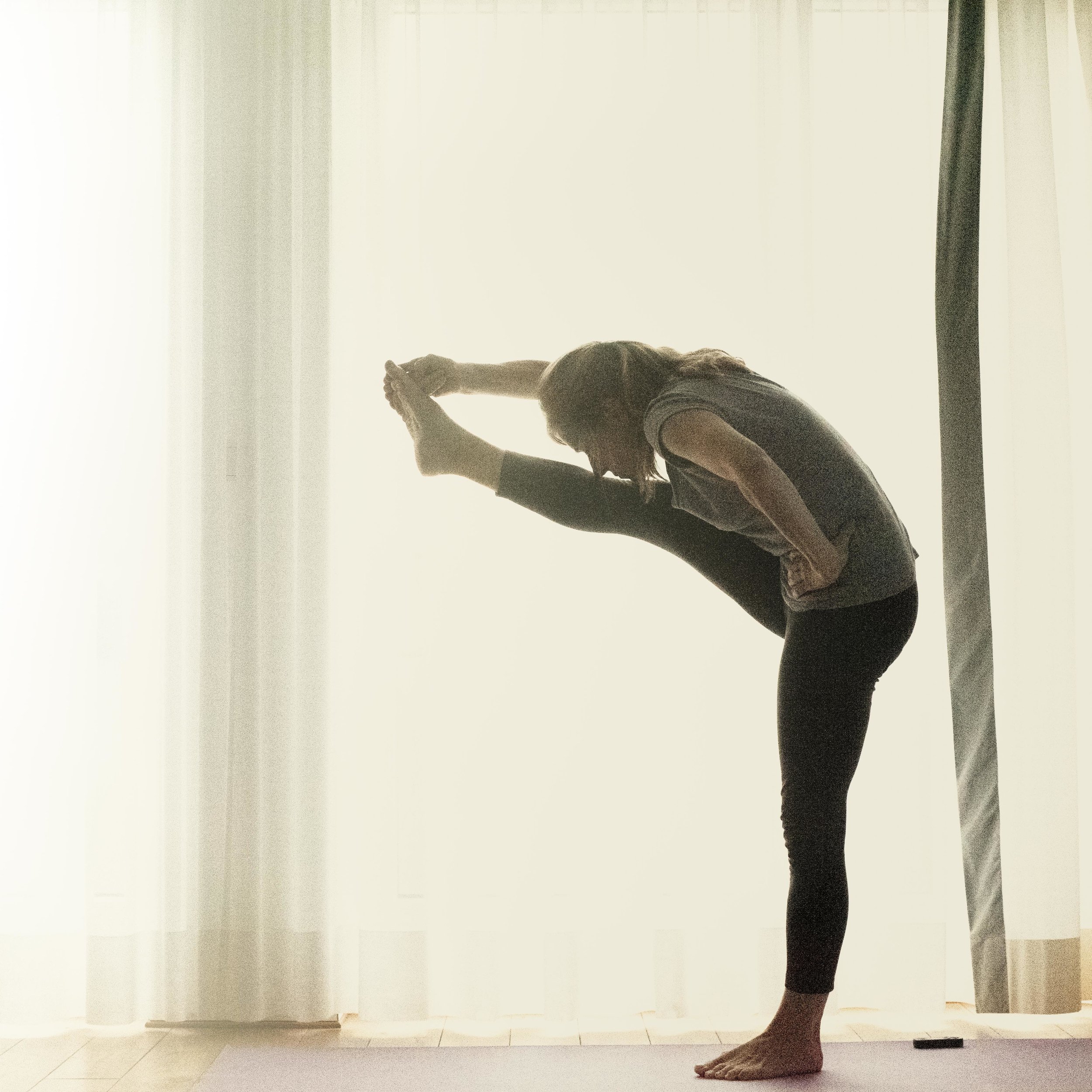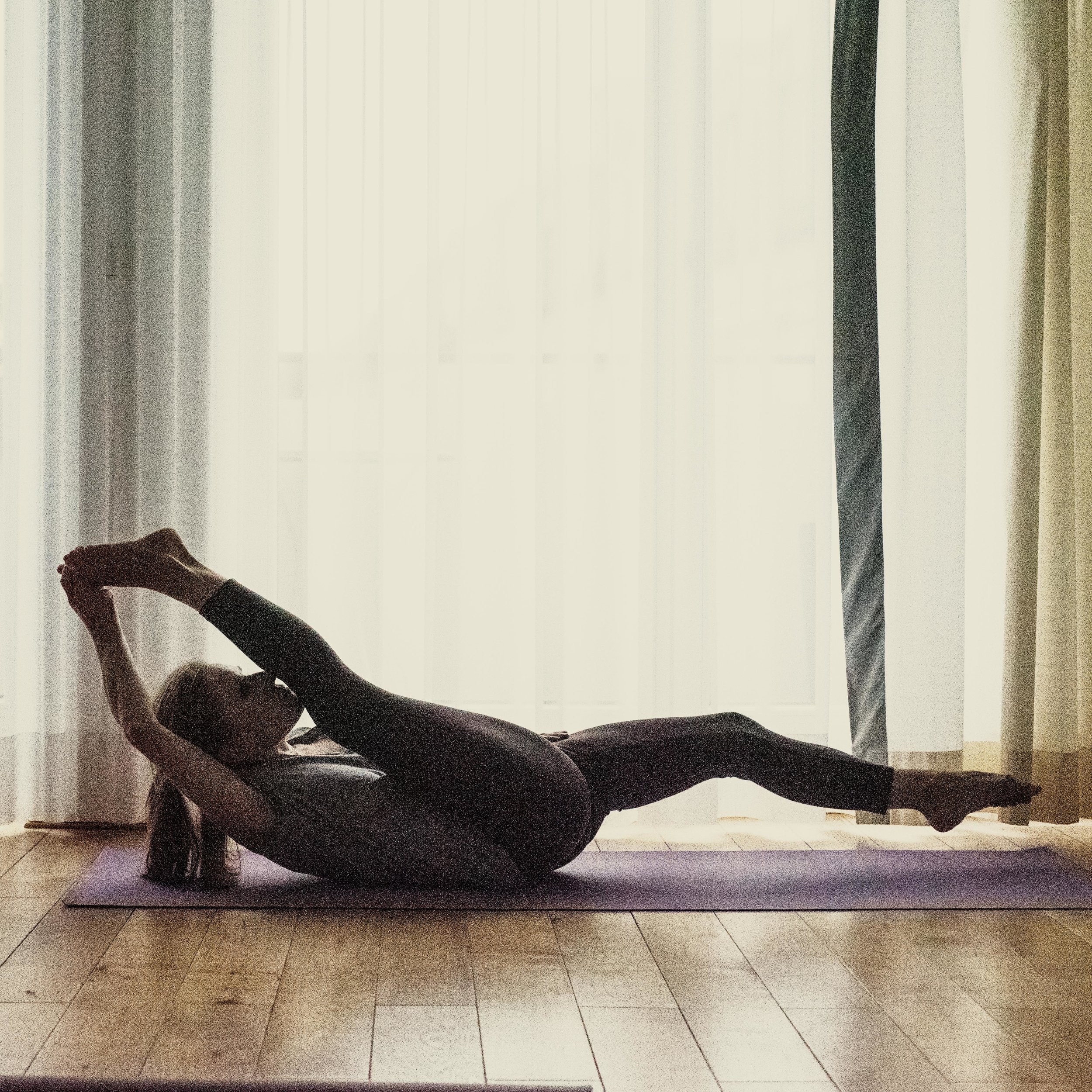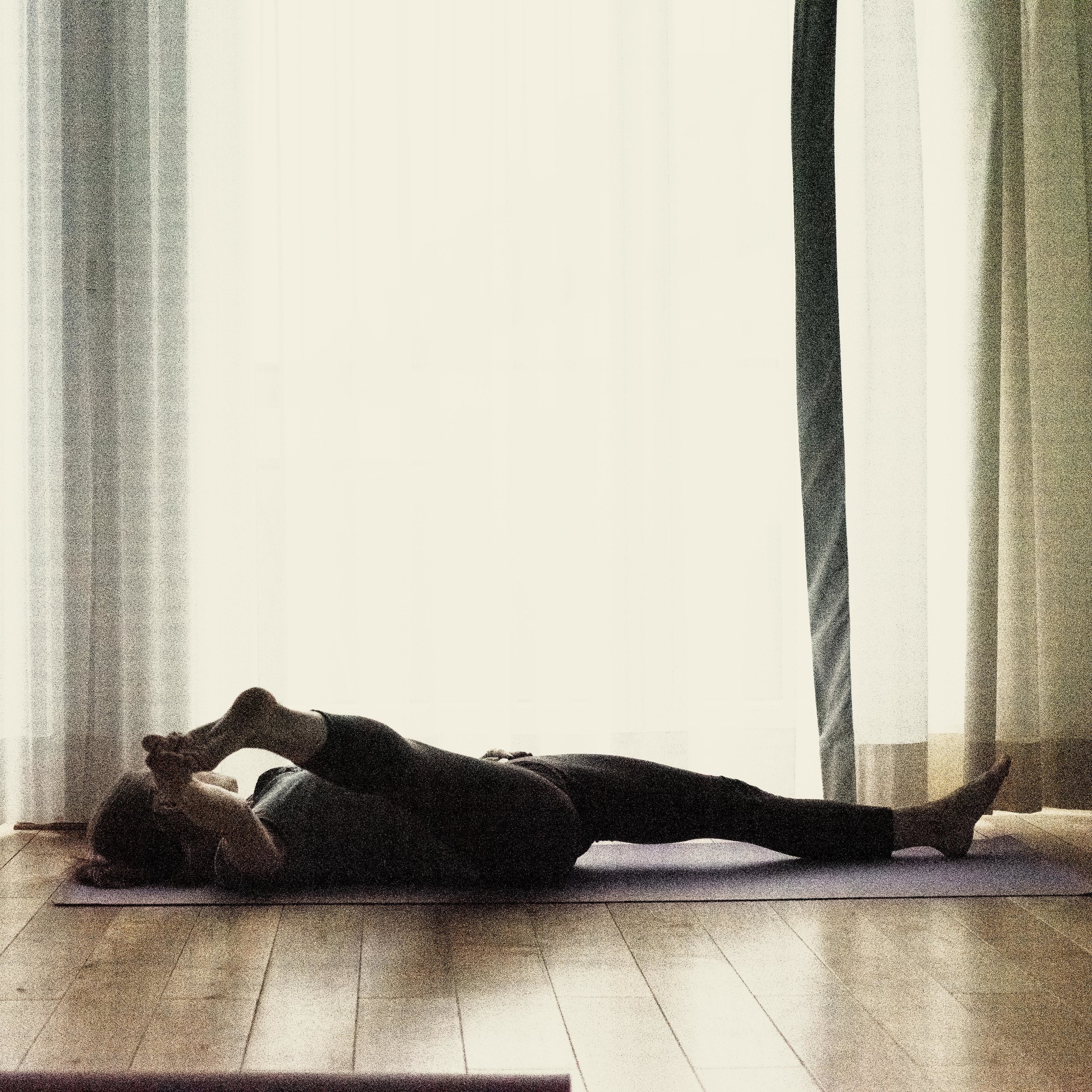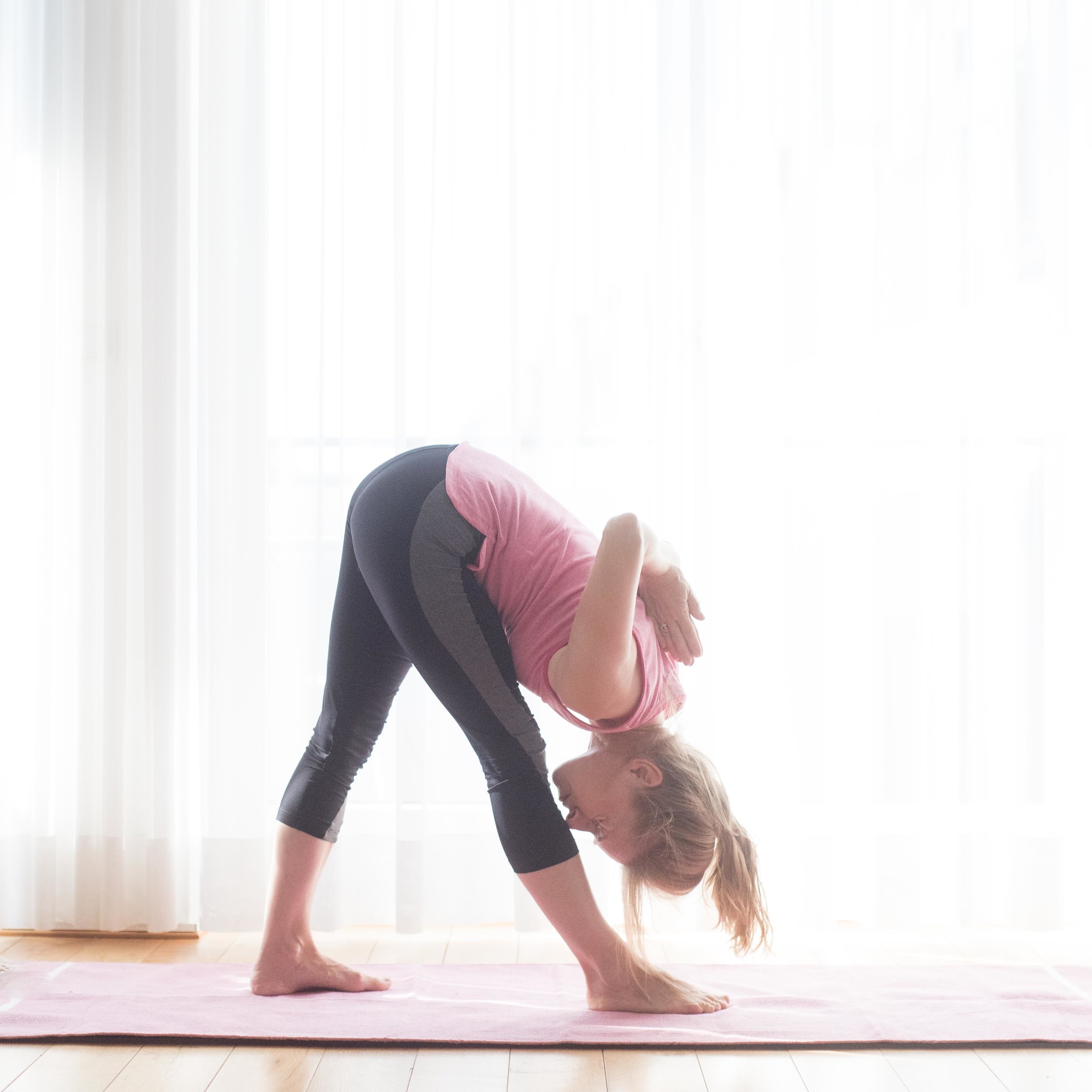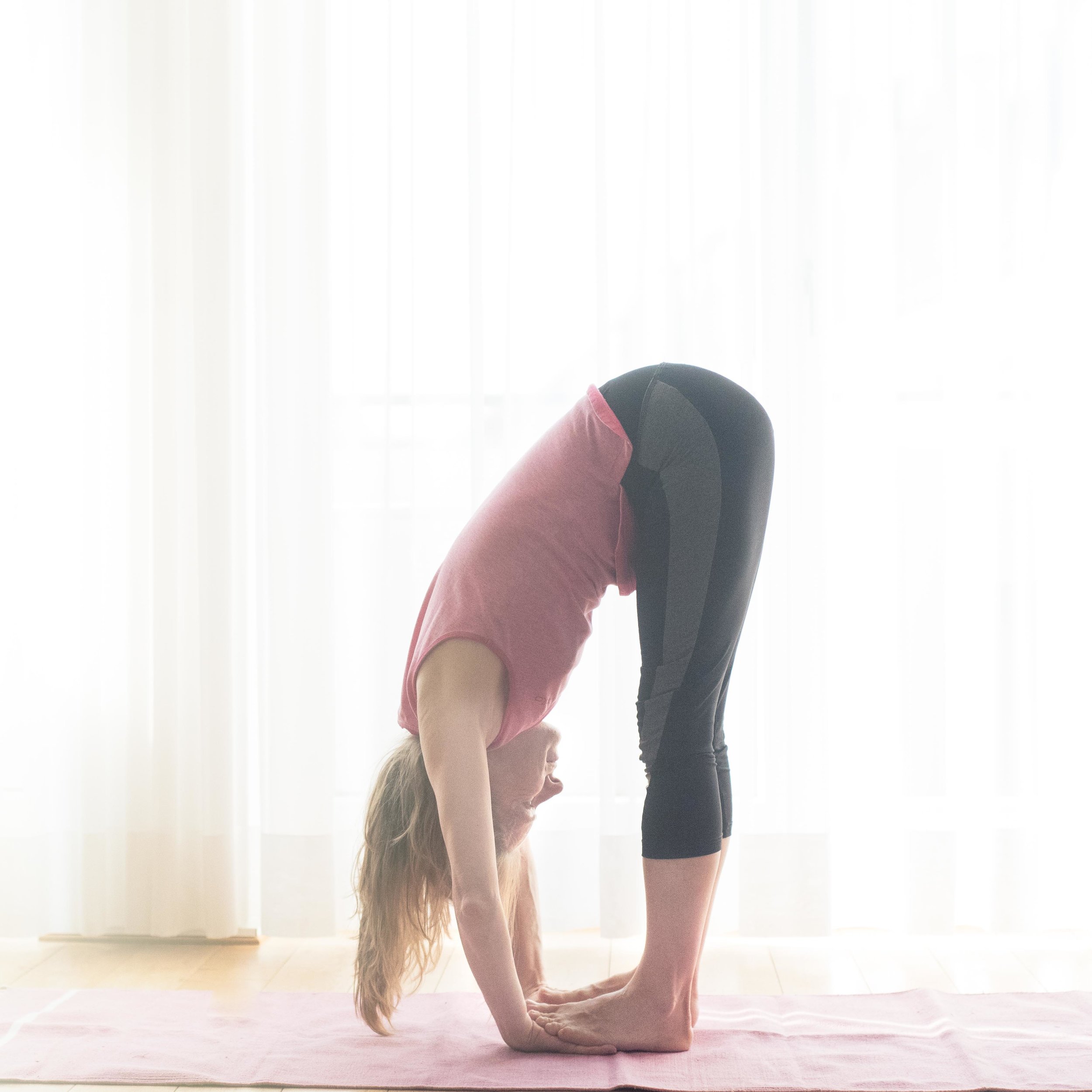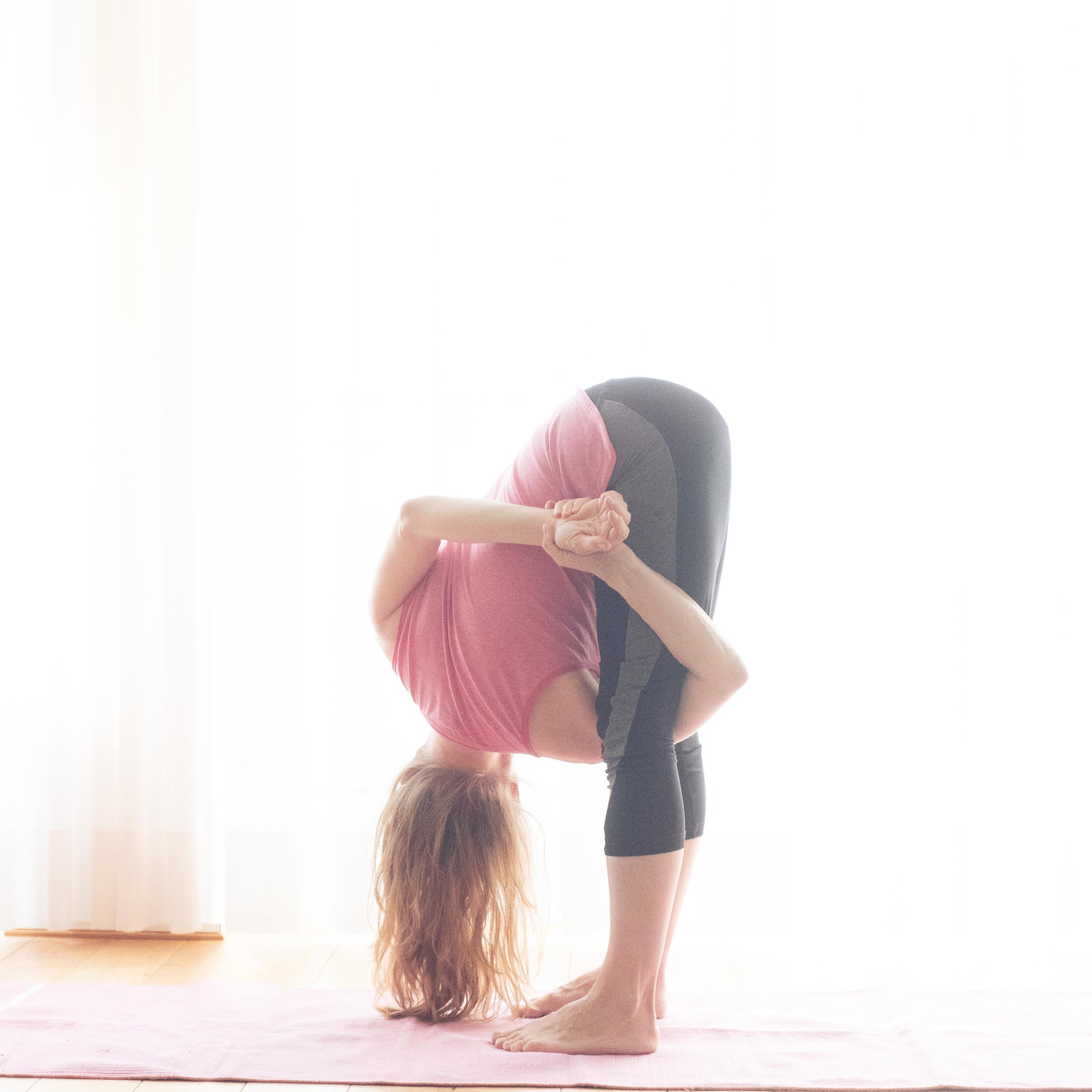Utthita parsvottanasana is possible again without pain. This is relatively new. I exercised variations during the last two years. I put my hands on the floor to support the upper body. I couldn’t hang forward. I also moved from downdog in this position. These were the main variations that I exercised.
I had to be creative and I had to find positions that were similar to the original pose during the last years. Number one rule was that the performance of an asana shouldn’t inflame my back pain. Even though I came to the conclusion that there was no physical damage anymore I had to take care. My pain became chronic, the pain system was out of order. That doesn’t mean that one cannot experience pain. Pain can be experienced also when there is no physical cause anymore. The mind can create pain as a precaution. I had to redo this malfunctioning of my brain.
When I have (or want) to modify an asana I usually wonder what sort of asana it is. I want to practice close to the original Ashtanga yoga series, but I also adjust it to my needs. In the above case it’s a forward bending asana. The position of the arms open the shoulders and the upper body.
Often easier variations of an asana exist, but also more difficult ones. It’s the task to find asanas that are doable but have almost the same effect like the original asana.
I often look for asanas that count as exercises. They shall help me to learn a challenging asana. In the above case I stretched my straight arms behind my back and moved them over the head forward. This had a leverage effect. Yet I also remember that I overstretched my hamstrings that way once. One should always practice with care. It’s nonsense to force the body in asanas that are not yet possible. Patience is a skill that one can learn. Yet it’s also true, if nothing can be felt, nothing moves. To learn how to learn is the true challenge. Where are the limits and how can I push them is an important question.
The further the legs are apart from each other the easier the pose gets.
Yesterday I saw a movie on Instagram: 2 guys forced a rather stiff man into upavistha konasana A. It’s explored scientifically what makes sense when stretching the body and what makes no sense. To force someone into a pose is so dangerous with not much result. This all has nothing to do with yoga, but with ignorance, unhealthy ambition and aggression. The ignorance of HOW to stretch correctly or more generally spoken, HOW to learn asanas is one of the main critics I have these days. Instead of learning how to stretch effectively , the community refers to a tradition of the last century. The tradition has changed already (not for the better), yet not the ignorance. That’s why the learning process is so slow in the Ashtanga yoga community. People don’t learn asanas because how they are taught to exercise these asanas is not effective. To be precise: To stay in an asana for 5 breaths only is not long enough. I’ll write more about this topic.
Utthita parsvottanasana is usually the last pose of the standing asanas if one practices the first series and many of the asanas of the second series, too. This makes sense as the practice would last too long otherwise The standing asanas have still seven more asanas. Some must be practiced on the right side and the left side. This is time-consuming. I used to practice 2 and a half hours. The output didn’t correspond to the effort I had put into that practice. At home I can do better. Hopefully. I shall see. It’s an experiment.
The next asanas are interesting ones. I’ll write about it in my next post. I practice them these days as I alter first series and second series. I limit my practice to 90 minutes.
Main thought of this post:
First I analyse the asana. Is it a back bending, twist, balancing, inversion forward bending asana?
Then I wonder if I need extra exercises to learn an asana. Or I realize that I have to step back because the original asana hurts too much. There are also asanas that don’t challenge me enough. Then I might add a more challenging one.
When I know my goal I search for appropriate asanas and vinyasas and exercise those for the coming weeks.
After a month I check if it made sense to do these variations or extra asanas. If yes, I keep doing them, if not I look for a change.
Practicing at home allows to be creative. It deepens the understanding of the asanas.

